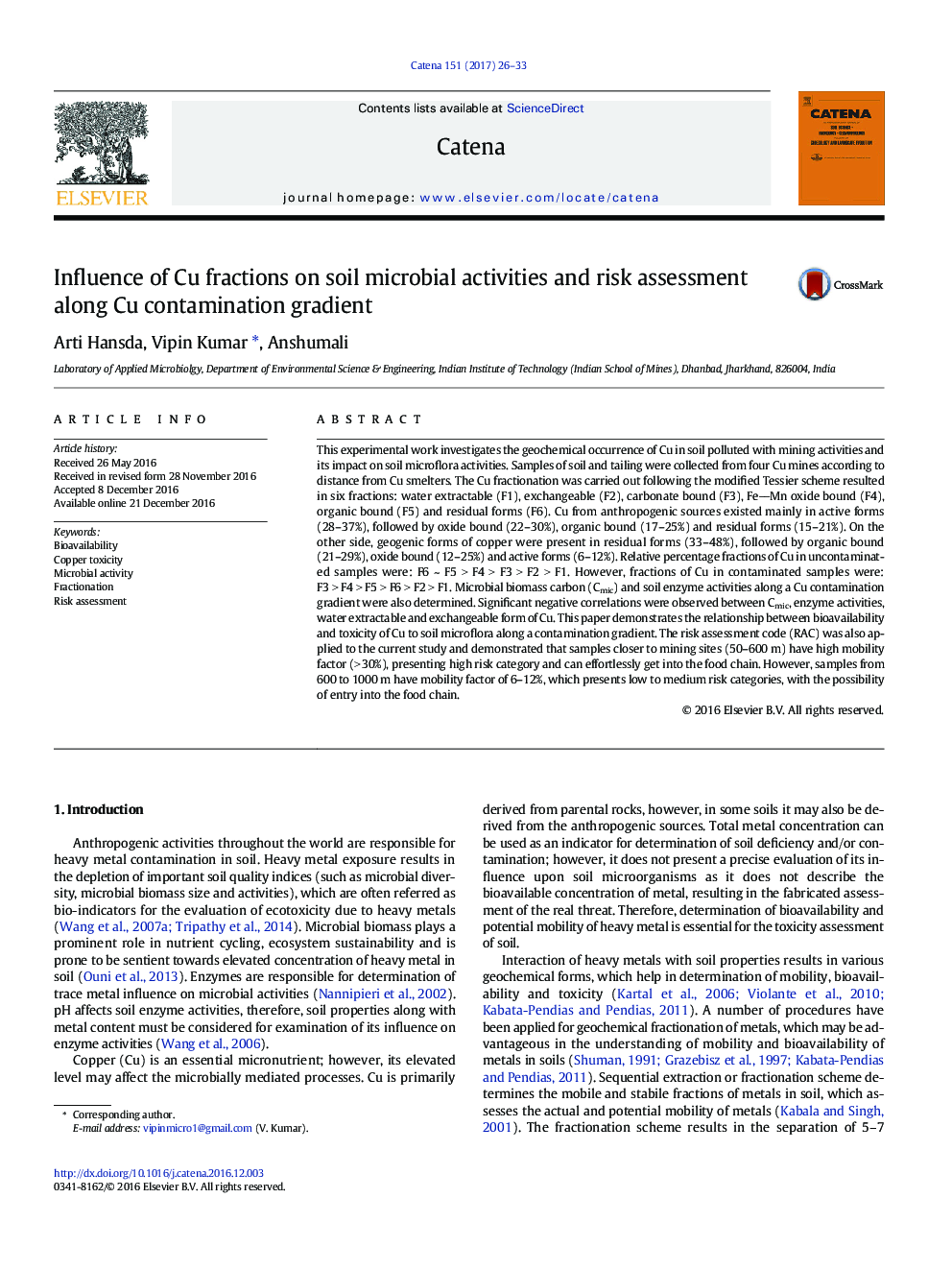| کد مقاله | کد نشریه | سال انتشار | مقاله انگلیسی | نسخه تمام متن |
|---|---|---|---|---|
| 5770170 | 1629203 | 2017 | 8 صفحه PDF | دانلود رایگان |

- Pollution rate is dependent on direction and distance to the smelters.
- Cu fractionation in mine tailing and adjacent soil was assessed.
- Cmic is a potential indicator of Cu toxicity to soil microflora.
- RAC represented high risk to samples closer to mining sites (50-600Â m).
This experimental work investigates the geochemical occurrence of Cu in soil polluted with mining activities and its impact on soil microflora activities. Samples of soil and tailing were collected from four Cu mines according to distance from Cu smelters. The Cu fractionation was carried out following the modified Tessier scheme resulted in six fractions: water extractable (F1), exchangeable (F2), carbonate bound (F3), FeMn oxide bound (F4), organic bound (F5) and residual forms (F6). Cu from anthropogenic sources existed mainly in active forms (28-37%), followed by oxide bound (22-30%), organic bound (17-25%) and residual forms (15-21%). On the other side, geogenic forms of copper were present in residual forms (33-48%), followed by organic bound (21-29%), oxide bound (12-25%) and active forms (6-12%). Relative percentage fractions of Cu in uncontaminated samples were: F6Â ~Â F5Â >Â F4Â >Â F3Â >Â F2Â >Â F1. However, fractions of Cu in contaminated samples were: F3Â >Â F4Â >Â F5Â >Â F6Â >Â F2Â >Â F1. Microbial biomass carbon (Cmic) and soil enzyme activities along a Cu contamination gradient were also determined. Significant negative correlations were observed between Cmic, enzyme activities, water extractable and exchangeable form of Cu. This paper demonstrates the relationship between bioavailability and toxicity of Cu to soil microflora along a contamination gradient. The risk assessment code (RAC) was also applied to the current study and demonstrated that samples closer to mining sites (50-600Â m) have high mobility factor (>Â 30%), presenting high risk category and can effortlessly get into the food chain. However, samples from 600 to 1000Â m have mobility factor of 6-12%, which presents low to medium risk categories, with the possibility of entry into the food chain.
.160
Journal: CATENA - Volume 151, April 2017, Pages 26-33